Frank A. Rose testified before the House Committee on Science, Space and Technology Committee on March 13, 2019. His testimony on “America in Space: Future Visions, Current Issues,” focused on pressing challenges to space, including: orbital debris; mega-constellations; anti-satellite threats; and the rise of China’s growing domain influence.
Introduction
Chairwoman Johnson, Ranking Member Lucas, and members of the committee, it is an honor to appear before you to discuss America’s future in space. Let me begin by stating that although I am currently a senior fellow at the Brookings Institution, I am presenting this testimony in my in personal capacity. As an independent think tank, the Brookings Institution does not take institutional positions on any issue.
As members of the committee can see from my biography, the vast majority of my work on outer space has been devoted to the national security and diplomatic aspects of outer space, not civil or commercial space. However, based on my experience, I’ve increasingly come to the conclusion that the national security, civil, and commercial space have become more intertwined, thus requiring us to address outer space in a more integrated manner, and will focus on that interrelationship in my testimony today.
Access to outer space is critical to almost everything we do here on earth. The utilization of outer space helps us warn of natural disasters, facilitate navigation and transportation globally, expand our scientific frontiers, monitor compliance with arms control treaties and agreements, provide global access to financial operations, and scores of other activities worldwide. However, today’s outer space environment is evolving rapidly, presenting the United States and other nations with a number of key challenges to the sustainability, safety, stability, and security of the outer space environment.
From my perspective, some of the most pressing challenges include: 1) the continued growth of orbital debris, which represents an ever-increasing threat to both human and robotic space flight; 2) the emergence of mega-constellations of satellites; 3) the continued deployment of anti-satellite weapons by potential adversaries; and 4) the rise of China as an increasingly prominent actor in the civil, commercial, and security space spheres. Indeed, the space environment has become increasingly congested, competitive and contested.
American leadership is key to addressing these growing challenges in outer space. But given the sheer scope of the challenge we face in outer space, this is not something that the United States can address alone: it will require active collaboration and cooperation from our international partners. Indeed, international cooperation must be foundational to the United States’ approach to outer space going forward. In my testimony, I will further elaborate on the four challenges I outlined above, and make some specific recommendations as to how the United States can address each of them.
Addressing the Challenge of Orbital Debris
Defining the orbital debris challenge
Decades of space activity have littered Earth’s orbit with defunct satellites and pieces of debris. As we continue to increase activities in outer space, the chances of a collision increase. The United States is currently tracking over 20,000 pieces of orbital debris 10 centimeters or larger in various Earth orbits. Approximately 1,800 of these objects are active satellites. Other objects in orbit include: spent rocket bodies, inactive satellites, a wrench, and even a toothbrush! Additionally, as many as 600,000 pieces of orbital debris smaller than 10 centimeters exist that we currently don’t have the capability to track, but could still cause significant damage if a collision occurred. Experts warn that the current quantity and density of man-made debris significantly increases the odds of future collisions either as debris damages space systems or as colliding debris creates more space debris.
Because of the high speeds in which these objects travel in space (17,500 miles per hour), even a sub-millimeter piece of debris could cause a problem for human or robotic missions. This serious problem is continually growing as more debris is generated by routine operations as well as by accidents and mishaps such as the 2009 collision between a Russian Cosmos satellite and a commercially-operated Iridium satellite. Other debris is a result of deliberate acts, like China’s 2007 destructive test against one of its own satellites. That single test created over 3,000 pieces of debris larger than 10-cm and will stay in low earth orbit for potentially hundreds of years, presenting an ongoing threat to the space systems of all nations, including China itself. Over the past several years there have been hundreds of occasions when debris from China’s 2007 anti-satellite test has come close to their own satellites. Indeed, these two events alone are responsible for approximately 1/3 of all the debris in low Earth orbit.
The following chart on the on page 3, prepared by NASA in 2016, illustrates the dramatic growth in the amount of orbital debris since the dawn of the Space Age in 1957. The key question that arises is how does the United States effectively address the continuing threat from orbital debris. From my perspective, the solution will require a mix of technical, regulatory, and diplomatic efforts.
Space situational awareness and space traffic management
Improving space situational awareness (SSA) – the ability to track, characterize, and catalogue objects in outer space – is foundational to address the threat from orbital debris. For over a decade, the U.S. Joint Space Operations Center (JSPOC), located in Vandenberg Air Force Base in California has provided a global public good by helping government and commercial space operators avoid potential collisions in outer space. JSPOC currently publishes a catalog of space objects and warns global space operators, including foreign governments and commercial operators, of potential collisions free of charge. Additionally, over the past several years, the United States, through the U.S. Strategic Command, has negotiated and signed agreements with 16 governments and 68 commercial entities designed to improve SSA sharing.
However, with the emergence of the anti-satellite threat, which I will address in greater detail later in my testimony, there has been an evolving belief in both the Obama and Trump administrations that responsibility for the space traffic management mission (STM) would be better performed by a civilian agency, thus allowing the U.S. Department of Defense to focus on its primary mission: deterring, defending, and defeating threats to the United States
Therefore, on June 18, 2018, President Trump signed Space Policy Directive-3 (SPD-3), the National Space Traffic Management Policy. Under SPD-3, responsibility for STM will be transferred from the U.S. Department of Defense to the U.S. Department of Commerce. I support the decision to transfer the STM mission to a civilian agency, as it will allow for the Department of Defense to focus on its core mission, and make it easier for the United States to more effectively cooperate with international and commercial partners.
That said, the transition of the mission from the U.S. Department of Defense to the U.S. Department of Commerce will take time and require significant coordination. If not done in a careful and deliberative manner, it has the potential to disrupt this critical service. Therefore, I would recommend that the committee make ensuring an effective transition of the STM mission to the U.S. Department of Commerce one of its top oversight priorities over the next year.
Domestic regulatory and diplomatic framework
The United States has one of the most comprehensive set of national orbital debris mitigation standards and practices. NASA and the Department of Defense led the effort to establish the U.S. Government Orbital Debris Mitigation Standards Practices, which were approved by the White House in 2001. These guidelines focus on controlling debris released during normal operations; minimizing debris generated by accidental explosions; selecting safe flight profiles and operational configurations; and ensuring post-mission disposal of space structures. The 2006 and 2010 U.S. National Space Policies directed departments and agencies to implement these practices. But not all nations have been as diligent as the United States in developing and implementing effective debris mitigation practices and standards. This makes continued international engagement critical.
One of the most successful diplomatic efforts to date to address the orbital debris challenge has been the U.N. Debris Mitigation Guidelines, approved by the U.N. General Assembly in 2007. The guidelines are based on recommendations initially developed by the Inter-Agency Debris Coordination Committee (IADC), which consists of representatives from the world’s major space agencies such as the National Aeronautics and Space Administration (NASA), European Space Agency (ESA), and Russian State Corporation for Space Activities (ROSCOSMOS). The objective of these guidelines is to minimize the creation of man-made debris in Earth’s orbit and reduce the threat to human and robotic space flight.
The guidelines focus on limiting the amount of debris released during normal operations, reducing the probability of accidental collision in orbit, and avoiding intentional destruction and other harmful activities. While the guidelines themselves are not legally binding in international law, several countries have incorporated the guidelines into their domestic laws and regulations. The guidelines have also established a precedent as to what a responsible space actor does in orbit, and helped develop a strong international norm against conducting debris-generating events in outer space, such as China’s 2007 anti-satellite test.
Building on the Debris Mitigation Guidelines, in 2010, the U.N. Committee on Peaceful Uses of Outer Space (COPUOS) began an effort to develop a broader set of voluntary, best practice guidelines to enhance the long-term safety and sustainability of the outer space environment. These draft guidelines were focused on four broad areas, including sustainable space utilization supporting sustainable development on Earth; space debris, space operations, and tools to support space situational awareness (SSA) data-sharing; space weather; and regulatory regimes and guidance for new actors in the space arena.
In 2016, the COPUOS Working Group on Long-Term Sustainability reached agreement in Vienna on an initial set of 12 guidelines. These guidelines were subsequently agreed to by all 84 COPUOS member states and endorsed by the U.N. General Assembly. An additional set of nine more guidelines was agreed to by the Science and Technical Subcommittee and approved in early February 2018; however, the Working Group, was unable to reach consensus on its final report in how best to refer the preamble and guidelines to the General Assembly due to objections from Russia and several other countries.
Managing Mega-Constellations
As the members of this committee know well, the private sector is fundamentally reshaping the outer space environment. One of the most significant areas where they are doing this is the development of “mega constellations” of small satellites. According to press reports, several companies have plans to launch mega-constellations in the coming years. For example, in November 2018, the Federal Communications Commission (FCC) approved a request by Space X “to construct, deploy, and operate a new very-low-Earth constellation of more than 7,000 satellites using V-band frequencies.” These satellites will be used to improve broadband communications globally. Other companies around the world have plans to deploy similar satellite constellations as well. While these mega-constellations will improve space-based capabilities, they will also contribute significantly to the congestion of low Earth orbit.
NASA orbital debris experts have highlighted this concern in a recent study on the potential impact of large satellite constellations. According to Jer-Chyi Liou, NASA chief scientist for orbital debris, “Because of the number of spacecraft involved, [these companies] need to pay attention to certain areas to make sure they do not pollute the near-Earth space environment with significant orbital debris.” To address this challenge, NASA experts have recommended ensuring that the satellites in the constellations are de-orbited at the end of their respective service lives.
As these mega-constellations begin to be deployed it will be important that they are done in a way that is fully consistent with debris mitigation policy and standards. The good news is that U.S. regulators are beginning to think through the implications of mega-constellations of satellites on the long-term sustainability of the outer space environment. In their decision approving the SpaceX constellation, the FCC required the company to come back to the commission with updated plan for debris mitigation. The FCC further noted that:
Across the board, we need to prepare for the proliferation of satellites in our higher altitudes. In short, we have work to do. There are two places we can start. First, the FCC has to tackle the growing challenge posed by orbital debris. Today, the risk of debris-generating collusions is reasonably low. But they’ve already happened—and as more actors participate in the space industry and as more satellites of smaller size that are harder to track are launched, the frequency of these accidents is bound to increase. Unchecked, growing debris in orbit could make some regions of space unusable for decades to come. That is why we need to develop a comprehensive policy to mitigate collision risks and ensure space sustainability.
While this issue has received significant attention of U.S. domestic regulatory agencies, there are questions as to whether foreign governments are devoting the same level of attention to the issue. Therefore, active engagement with international partners should be a priority for the United States.
Emerging Anti-satellite Weapons Threat
While I understand this committee is primarily focused on the civil and commercial aspects of outer space, as I noted earlier, these cannot be separated from the national security concerns, especially the emerging threat from anti-satellite (or ASAT) weapons. Indeed, ASAT weapons — and the consequences of their use — could have significant implications for civil and commercial space systems, especially regarding debris generating events.
U.S. Director of National Intelligence Daniel Coats highlighted this during testimony before the Senate Select Committee on Intelligence on January 29, 2019. In his testimony, Coats noted “that China and Russia are training and equipping their military space forces and fielding new anti-satellite (ASAT) weapons to hold US and allies space services at risk, even as they push international agreements on non-weaponization of space.” There are a wide number of potential threats to U.S. space assets, including jammers, kinetic energy weapons, cyber, and lasers.
Given the negative impact that ASAT weapons could have on civil and commercial space systems, I would recommend that the committee be briefed by the U.S. intelligence community on this very significant challenge.
Managing China’s Rise in Outer Space
Overview of China’s space program
Over the past decade, China has emerged as a major international space power. Indeed, earlier this year, China became the first country to land a space probe on the far side of the moon. China’s role is outer space is certain to grow significantly in the coming years. According to a December 2018 report by the National Air and Space Intelligence Center:
China plans to become an international leader in lunar research and exploration with goals to assemble a lunar research station beginning in 2025, perform a crewed Moon landing mission in 2036, and establish and establish a Lunar Research and Development Base around 2050.
China also plans to deploy a rover to Mars by 2020; probe asteroids around 2022; and send a mission to Jupiter around 2029. It has also deployed a number of deep space ground stations around the world, including in Argentina, and is developing its own space station, the Tiangong, is scheduled to become fully operationally around 2022. China’s civil space activities are certainly impressive and present multiple opportunities for international collaboration and partnership.
However, as this committee knows well, one of the key challenges to actively engaging China in more robust civil space cooperation is the fact that the Chinese civil space program is controlled by the Chinese military. Therefore, there is a real possibility that any bilateral cooperation could contribute to China’s military space programs. In addition to its anti-satellite programs, China is also improving its space-based military reconnaissance, remote sensing capabilities, and communications capabilities.
This is not the first time the United States has faced a challenge from a peer competitor in space and also found a way to cooperate with that country on civil space projects. For example, in 1972, the United States and the Soviet Union agreed to an Apollo-Soyuz docking mission, which occurred in 1975. As Michael Krepon of the Stimson Center has written:
Some feared that this mission would compromise the U.S. space program while providing further rewards to the Soviet program. These anxieties proved to be overdrawn…The Apollo-Soyuz mission established practices of cooperation in space between Washington and Moscow that continue to this day on the international space station.
The key question that the United States must answer with regard to space cooperation with China is as follows: how does it develop a strategy that allows it to cooperate with China on civil space projects, while at same time safeguarding U.S. national security? I would recommend that the United States adopt a strategy that allows limited cooperation on select bilateral civil space projects, pragmatic cooperation on space sustainability issues, combined with a robust dialogue on space security issues and concerns.
U.S.-China civil space cooperation
The United States currently conducts limited bilateral cooperation with China in the civil space arena, primarily focused on aeronautics and Earth science. However, that cooperation is limited by Section 530 of the Consolidated Appropriations Act for 2019, which prevents any funds made available by the act from being used for:
National Aeronautics and Space Administration (NASA), the Office of Science and Technology Policy (OSTP), or the National Space Council (NSC) to develop, design, plan, promulgate, implement, or execute a bilateral policy, program, order, or contract of any kind to participate, collaborate, or coordinate bilaterally in any way with China or any Chinese-owned company unless such activities are specifically authorized by a law enacted after the date of enactment of this Act.
But the law does allow for cooperation if NASA, OSTP, and the NSC, after consultation with the Federal Bureau of Investigation, certifies that the cooperation will not harm U.S. national or economic security, and will not involve knowing interactions with any Chinese officials who have been determined by the United States to have direct involvement with violations of human rights. The law requires that any certifications be made to the House and Senate appropriations committees, and the FBI, 30 days prior to initiation of the activity.
As I have noted previously, concerns about China’s military activities in outer space are valid and I have personally been outspoken about them. That said, there are questions as to whether the current language limiting civil cooperation with China is too restrictive. For example, in a recent press interview, Charles Bolden, former administrator of NASA described the current prohibitions as a “significant legal constraint” and hindrance that should be relaxed of reversed. In the same interview, he argued that the United States should also work to integrate China into the International Space Station.
Based on the concerns raised by former Administrator Bolden and others, I would recommend that the committee review the impact of the current legislative language. China is a major space power and we should find ways to cooperate where practicable, in a manner consistent with the national interests of the United States.
Bilateral diplomatic engagements
During the last two years of the Obama administration, the United States worked to advance a pragmatic discussion with China on space security and sustainability issues, which I participated in actively as assistant secretary of state. For example, in 2015, the United States established a direct link between the U.S. Joint Space Operations Center (JSPOC) and the Beijing Institute for Telecommunications and Tracking (BITT) to provide China more timely conjunction assessment and collision avoidance notifications. Prior to that, all notifications were sent to China via the Chinese Ministry of Foreign Affairs, which was not the most effective way to share these types of notifications.
Furthermore, in May 2016, the United States and China convened the first ever U.S.-China Space Security Talks, which I chaired with my Chinese counterpart from the Ministry of Foreign Affairs. A second meeting of the group was held in December 2016 in Beijing. In addition to the orbital debris issue, the talks addressed measures to build mutual confidence and reduce the risk of miscalculation in outer space. The two sides also established a complementary Civil Space Dialogue, focused on exploring options for increasing bilateral and multilateral civil space cooperation.
During President Obama’s September 2016 visit to China, the White House released a jointly negotiated fact sheet noting the commitment of China and the United States to work together to reduce orbital debris. The fact sheet states:
The United States and China recognized that space debris can be catastrophic to satellite and human spaceflight, and that, due to the global dependence on space-based capabilities, the creation of space debris can seriously affect all nations. Therefore, as two Permanent Members of the UN Security Council with major space programs, the United States and China committed to intensify cooperation to address the common challenge of the creation of space debris and to promote cooperation on this issue in the international community.
While the production of a fact sheet in itself is not a major development, it is an example of certain level of bilateral progress that had been made to address space sustainability issues, especially orbital debris.
To date, the Trump administration has conducted limited bilateral engagements with China over outer space issues. On the positive side, the United States and China held the third U.S.-China Civil Space Dialogue on November 30, 2017. Additionally, NASA Administrator James Bridenstine met with Chinese National Space Administrator Zhang Kejian during the International Astronautical Congress in Bremen, Germany on October 1, 2018 to discuss future bilateral cooperation. However, based on publicly available information, it does not appear the United States and China have continued the bilateral Space Security Talks that were established in 2016.
Conclusions and Recommendations
- Space traffic management mission transition. With the signing of the SPD-3 in June 2018, the space traffic management mission will transfer from the Department of Defense to the Department of Commerce. Ensuring an effective transfer of this mission is critical, and I would recommend that the committee make ensuring that transition be one of its most important oversight priorities.
- International cooperation on space situational awareness. Though the United States has the best space surveillance network in the world, it can greatly improve its capabilities and effectiveness through cooperation with international partners. Therefore, it will be important to continue and expand the excellent work U.S. Strategic Command has done engaging foreign partners on SSA to date. Indeed, SPD-3 states that “the United States should seek to lead the world in the development of improved SSA data standards and information standards.” The committee should use its oversight powers to ensure that international cooperation on SSA remains a key priority and receives the necessary resources.
- Mega-constellations. The emergence of mega-constellations of satellites in the near future will pose new challenges to our ability to maintain to long-term sustainability of the outer space environment. These new mega-constellations have the potential to provide the world significant benefits, but they must be operated in a way consistent with maintaining the long-term sustainability of key orbits around the Earth. The United States Government has identified the rise of mega-constellations as a significant challenge, but there are questions whether is a truly organized to manage this challenge. Indeed, in its decision authorizing the SpaceX constellation, the FCC noted that it “must coordinate more closely with other federal actors to figure out what our national policies are for this jumble of new space activity. Right now, the National Space Council is considering policy changes to help promote the growth of the commercial space industry…But the FCC should have a seat at this table.” Ensuring that are right actors are at the table to address this issue should be a priority for the committee. Additionally, we need to broaden this discussion to include key international actors, as managing the growth of mega-constellations is not an issue that the United States can address alone.
- Emerging threat from anti-satellite weapons. One of the most disturbing trends in the outer space environment is the development and deployment of anti-satellite weapons by potential adversaries. The deployment and potential use of anti-satellite and other counter-space capabilities will have a direct impact on civil and commercial space systems. Therefore, I recommend the committee ensure that it has a comprehensive understanding of the issue.
- International norms of behavior. As noted previously, outer space is becoming increasingly congested, competitive and contested. The rise of commercial actors, mega-constellations of satellites, and anti-satellite weapons are transforming the outer space environment. The United States cannot solve these problems on its own, it requires international cooperation. Therefore, the committee should encourage the executive branch to actively pursue the development of bilateral and multilateral norms of behavior. And given the increasingly important role that the commercial space sector is playing shaping the future of the space environment, it is critical that they are included in any discussions of norms.
- Comprehensive strategy for outer space engagement with China. China is a major actor in outer space and its role will continue to grow in the coming years. Given these facts, the United States needs a comprehensive strategy for engaging China on outer space that addresses the civil, commercial, and national security spheres. I recommend that the committee direct the executive branch to develop comprehensive strategy for engaging China on outer space, that could include steps already taken on bilateral shared interests like space debris mitigation. In the context of such a review, I would also recommend that the committee review the impact and effectiveness of the current legislative restrictions on civil space cooperation with China.
- Bilateral U.S.-China civil and security space dialogues. Given the increasing role that China will play in the civil and security space arena, the United States should maintain senior-level civil and security space dialogues to discuss areas for potential cooperation as well as areas of concern. Since taking office, the Trump administration has held one meeting of the U.S.-China Civil Space Dialogue in November 2017. This dialogue should be continued. However, it has not reconvened the Space Security Talks, first held in 2016. I recommend that these security-related space talks be resumed in the near future.
The Brookings Institution is committed to quality, independence, and impact.
We are supported by a diverse array of funders. In line with our values and policies, each Brookings publication represents the sole views of its author(s).
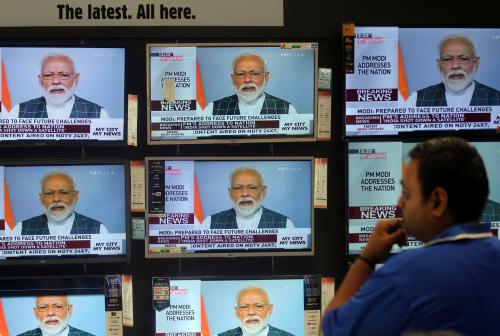
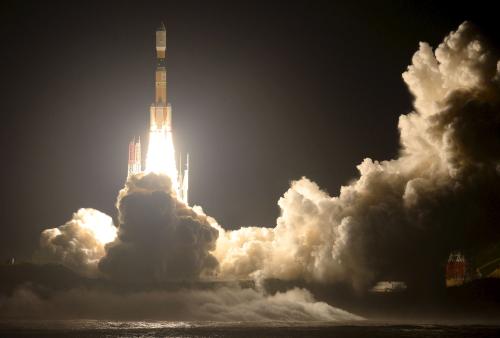
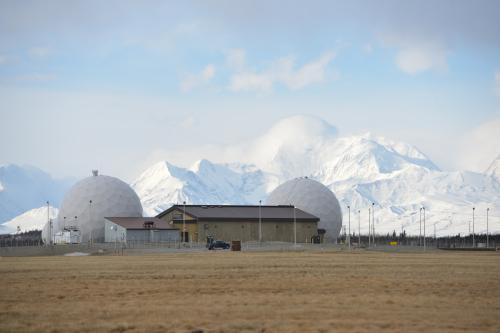
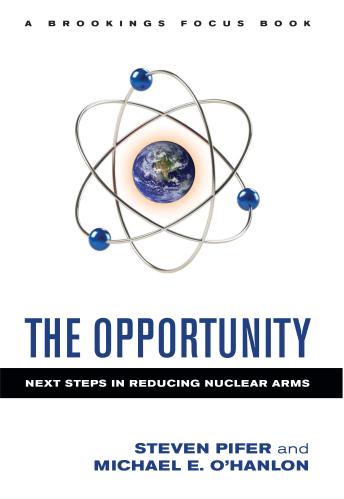



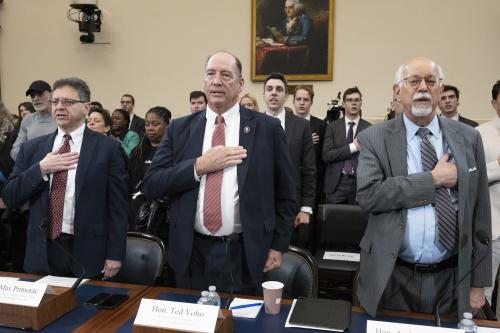
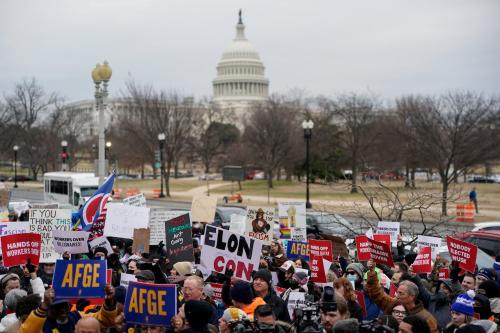
Commentary
TestimonyAmerica in space: Future visions, current issues
March 14, 2019